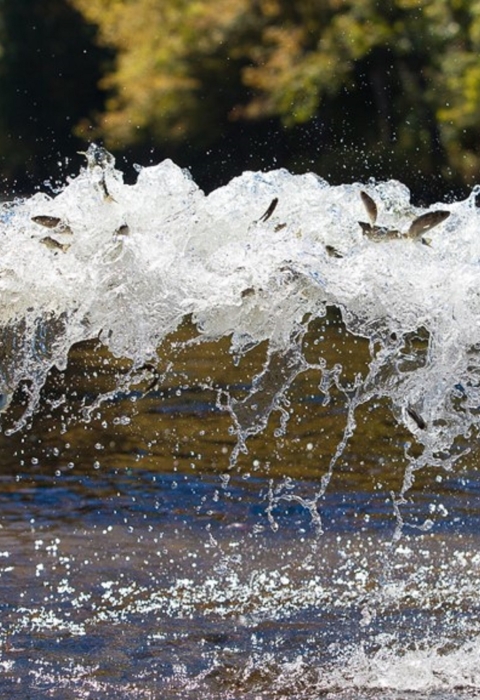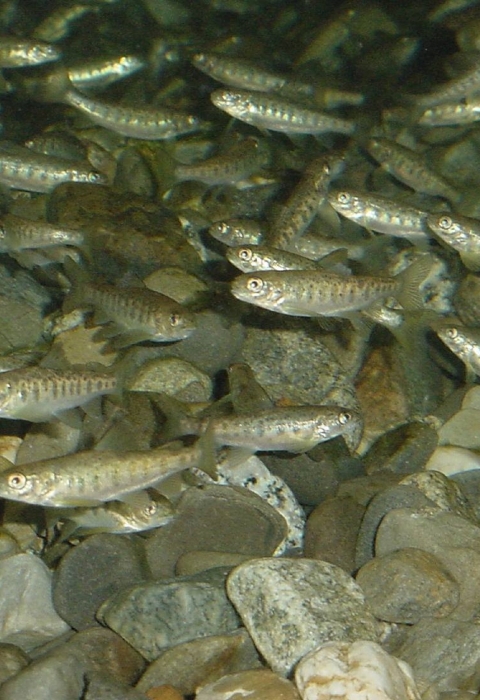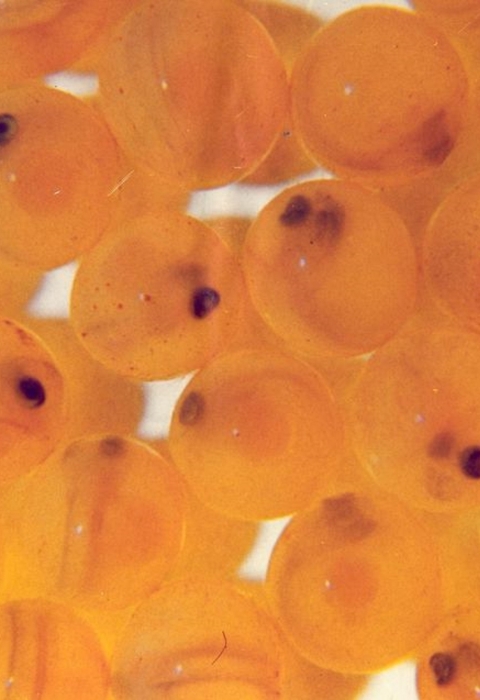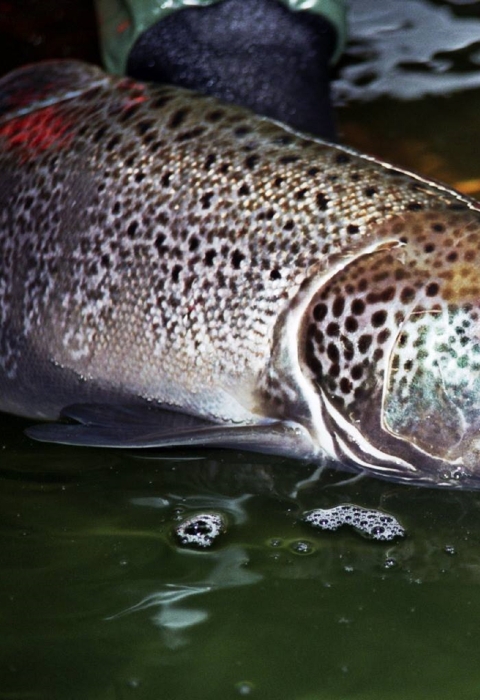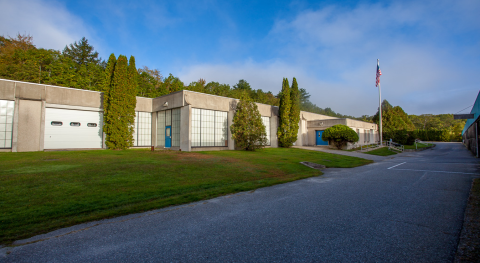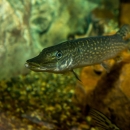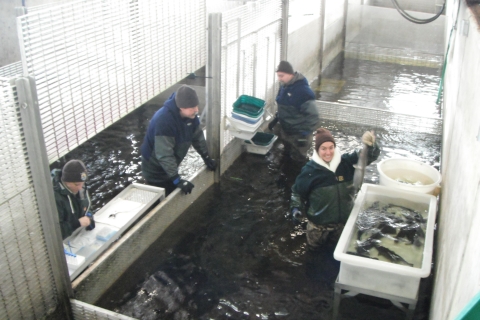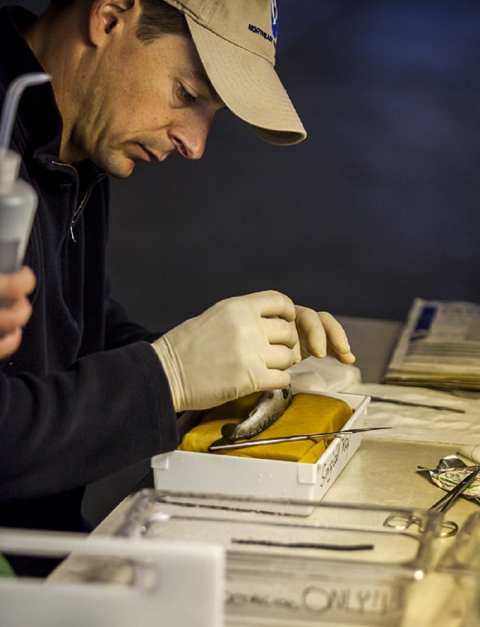Visit Us
The hatchery is open for visitors and located at:
1 Hatchery Way
Ellsworth, ME 04605
(207) 667-9531
Location and Contact Information
About Us
Since 1871, the National Fish Hatchery system has been at work improving recreational fishing and restoring aquatic species that are in decline, at risk, and are important to the health of our aquatic systems. Across the country, the network of National Fish Hatcheries work with states and tribes to conserve, restore and enhance the fish and aquatic resources of America for future generations.
Green Lake NFH is a large-scale cold water hatchery located in Downeast Maine. Built in 1973, the mission of the hatchery has changed from providing sport fish for New England waters, to a conservation hatchery dedicated to raising river-specific strains of healthy Atlantic salmon for recovering endangered Atlantic salmon to Gulf of Maine rivers. Three out of every four Atlantic salmon returning to U.S. waters come from Green Lake National Fish Hatchery.
Tours
We are open every day from 8:00 a.m. until 3:00 p.m., except for major holidays. We offer a self-guided tour at any time. We are currently not offering guided tours.
The hatchery occasionally closes due to weather. We advise you call ahead if you are planning to visit from afar or are bringing a large group of people.
What We Do
The next time you go fishing, you might just catch a fish that was raised at a National Fish Hatchery. Since 1871, National Fish Hatcheries have been responding to conservation challenges affecting America’s fish and other aquatic species. Producing fish continues to be an irreplaceable tool in managing or restoring fisheries along with habitat conservation. In doing so, we help provide recreation opportunities to America’s 34 million anglers who spend $36 billion annually in pursuit of their favored pastime.
Green Lake NFH works collaboratively with the National Oceanic and Atmospheric Administration, Maine Department of Marine Resources, Penobscot Indian Nation, educational institutions and non-government organizations and stakeholders to recover salmon in rivers where salmon have been lost and rehabilitate rivers where the genetic legacy of Atlantic salmon still exists, but is waning.
Our Organization
Our Species
Green Lake NFH produces the juvenile life stages of Atlantic salmon: parr, smolts, and eggs. The hatchery also rears adult Penobscot River origin Atlantic salmon.
The reproductively mature adults in a population that breed (or spawn) and produce more individuals (offspring or progeny).
Learn more about broodstock Atlantic salmon
Get Involved
Whether you want to further conservation, learn more about nature, or share your love of the outdoors, you’ve come to the right place. National Fish Hatcheries provide many opportunities for you to help your community and fish and wildlife by doing what you love.
National Fish Hatcheries partner with volunteers, youth groups, landowners, neighbors, and residents of both urban and rural communities to make a lasting difference. There are opportunities for everyone to get involved!
Volunteers: Gain new experiences and meet new people while helping to advance fish and aquatic conservation.
Local Groups: Find out how communities can work with hatcheries to conserve our shared natural resources.
Youth: Explore paid and unpaid opportunities to learn and develop leadership skills.
Projects and Research
Green Lake NFH is one of two United States Fish and Wildlife Service genetic conservation hatcheries located in Maine. Green Lake National Fish Hatchery’s primary mission is to produce juvenile life stages of Atlantic salmon (parr, smolts, and eggs) as part of recovery efforts for the Gulf of Maine Distinct Population Segment (DPS) of Atlantic salmon. At the time of listing under the Endangered Species Act, there were eight rivers in the geographic range of the DPS known to support wild Atlantic salmon populations. In July 2009, Atlantic salmon populations of the Penobscot, Kennebec and Androscoggin rivers were added for protection.
Atlantic salmon smolts reared at Green Lake are utilized for many different research projects as well as for restoration and recovery efforts. Researchers from the National Oceanic and Atmospheric Administration and the University of Maine in Orono have conducted numerous studies tagging studies to help better understand the migration and movements of Atlantic salmon smolts and parr in the rivers and estuaries of Downeast Maine. These studies are also helping to contribute to our understanding of how Atlantic salmon move through barriers such as dams and culverts.
